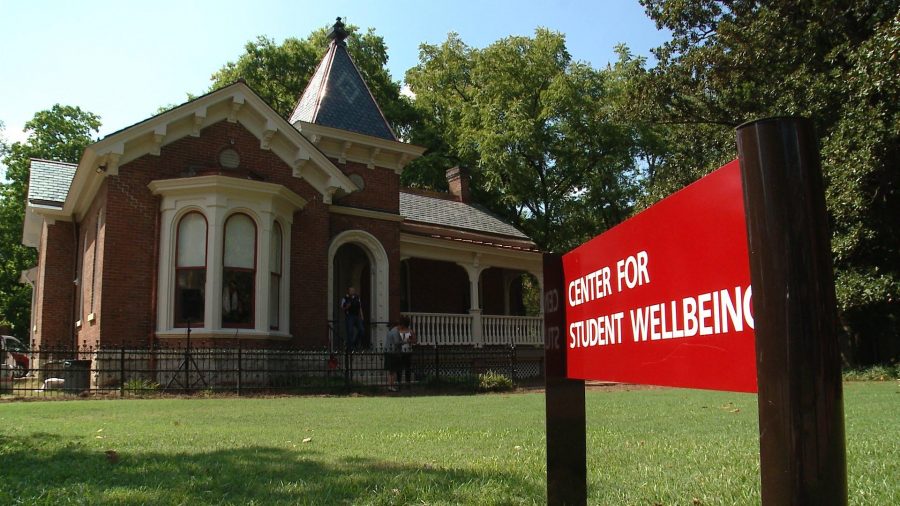In Oct. 2016, Vanderbilt launched the Healthy Minds Survey, a 45 minute online survey used to evaluate mental health on campus. The survey is conducted by a research group at the University of Michigan and has been administered at over 150 colleges and universities since its launch.
The survey was sent to all undergraduate, graduate and professional students. With a response rate of about 40 percent, the survey conducted at Vanderbilt far exceeded the national response rate of 23 percent. A preliminary report of the results was released in Dec. 2017, providing access to an evaluation of campus culture and possible recommendations.
Cynthia Cyrus, Vice Provost for Learning and Residential Affairs, was involved in the decision-making process for which portions of the Healthy Minds questionnaire would be utilized for Vanderbilt.
“There’s a core set of questions and then we picked a couple of additional modules and then there’s the ability to add on ten questions that the university itself designs,” Cyrus said.
The preliminary report of the results revealed information such as students’ barriers to seeking services, utilization of resources and perception of campus culture. The survey responders’ most frequently reported barrier to seeking mental health services on campus was “not enough time.”
“That’s just really striking to me that students don’t feel like they have enough time for self care,” Rachel Eskridge, director of the Center for Student Wellbeing, said. “And I don’t think that’s the only barrier, but that was the most frequently reported barrier.”
We have a campus presumption that other people are going to look down on someone who seeks service, but that’s not actually true in the data.
In addition to a time barrier when seeking services, there is an ongoing challenge of overcoming the stigma that surrounds mental health issues at Vanderbilt and beyond. The survey results reveal a disparity between students’ perception of what their peers would think about seeking mental health resources and students’ own attitudes towards those seeking services.
“I think one of the most startling findings in the data was that roughly five percent of students think that ‘I would have an issue if somebody sought mental health services’ but people project that somewhere between 30 and 40 percent of their peers would have an issue if someone sought mental health services,” Cyrus said. “So we have a campus presumption that other people are going to look down on someone who seeks service, but that’s not actually true in the data that we find.”
For survey respondents seeking mental health services, the PCC was the most commonly cited provider. Additionally, over 90 percent of respondents conveyed that ‘if I needed to seek professional help for my mental or emotional health, I would know where to go on campus.’
“I feel like there’s so much programming and so much information out there but I also wonder if some of that could possibly be students not knowing where to go for what,” Eskridge said. “Knowing the services that exist, but not knowing which one is appropriate for their needs. And that’s something that I really hope to be able to make clearer as we move forward.”
Some recommendations are presented in the preliminary report, and the data has been incorporated into decision making with the transition to the UCC as well as the Go There campaign to reduce stigma. Cyrus says that as the data is further analyzed, student input and recommendations will continue to be evaluated.
“There is current work this semester with the goal of having some recommendations to the Provost by spring break,” Cyrus said. “So we’re taking the data as released and looking at what kinds of actions we want to take next year and the timeframe where we can get them scheduled because there’s a lot of work going on in this area.”
One of the challenges that both Cyrus and Eskridge cite is fostering a campus culture of resilience. Eskridge emphasized the importance of having the tools for overcoming setbacks when confronted with difficult situations.
“I think the positive mental health measurements and then the resilience measurements relate to the CSW’s work most closely,” Eskridge said. “And while we were in line I believe with national data on those two things, I still would love to see those numbers go up.”
Providing students with the necessary skills to practice wellbeing and self-care is an essential aspect of mental health initiatives across campus. Cyrus said the combination of the increasingly open dialogue and the ongoing work of various organization continues to build a more positive campus culture.
“This is how you really affect change and I think it’s really powerful and has the capacity to put us at the forefront of the nation in terms of taking on these issues,” Cyrus said.

